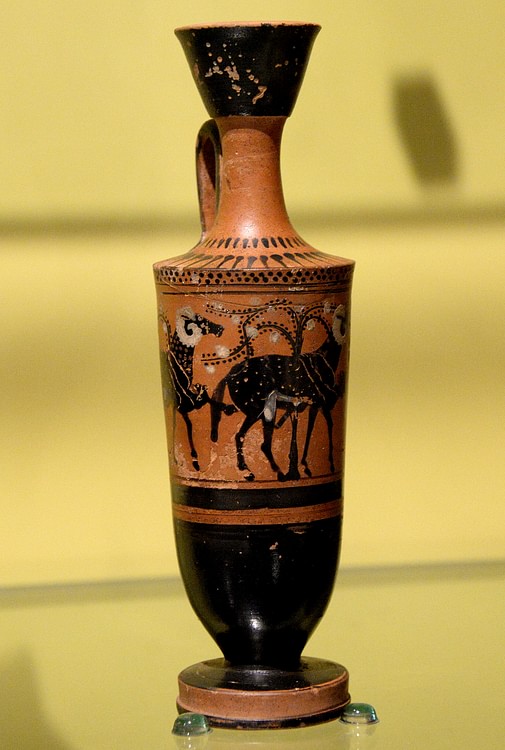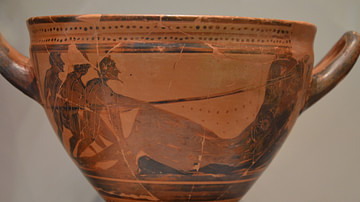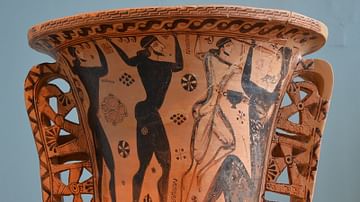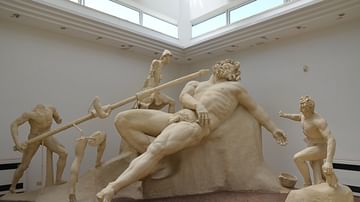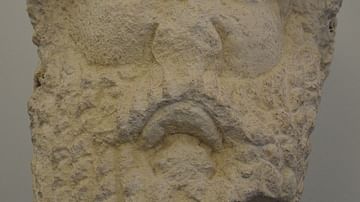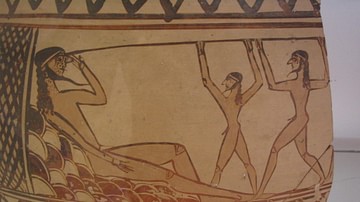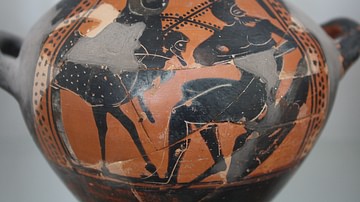Illustration
Oil, especially olive oil, is stored in a specialized Greek pottery; lekythos (pleural, lekythoi). Many lekythoi were found inside tombs; they were used to anointg the dead bodies of single men. Mainly dull red and black paints were used by artists to decorate these ceramics. This is a scene from Homer's Odyssey. Odysseus and his men tie themselves to the underside of sheep to escape the giant cyclops Polyphemus. Attica, Greece, circa 520 BCE. (National Museum of Scotland, Edinburgh, UK)
Cite This Work
APA Style
Amin, O. S. M. (2015, November 21). Lekythos, Odysseus & Polyphemus. World History Encyclopedia. Retrieved from https://www.worldhistory.org/image/4188/lekythos-odysseus--polyphemus/
Chicago Style
Amin, Osama Shukir Muhammed. "Lekythos, Odysseus & Polyphemus." World History Encyclopedia. Last modified November 21, 2015. https://www.worldhistory.org/image/4188/lekythos-odysseus--polyphemus/.
MLA Style
Amin, Osama Shukir Muhammed. "Lekythos, Odysseus & Polyphemus." World History Encyclopedia. World History Encyclopedia, 21 Nov 2015. Web. 19 Apr 2024.
